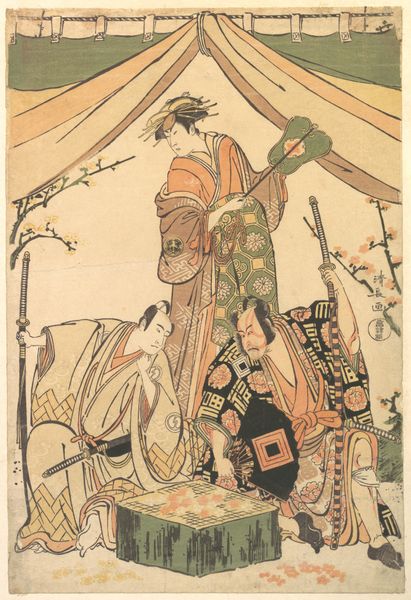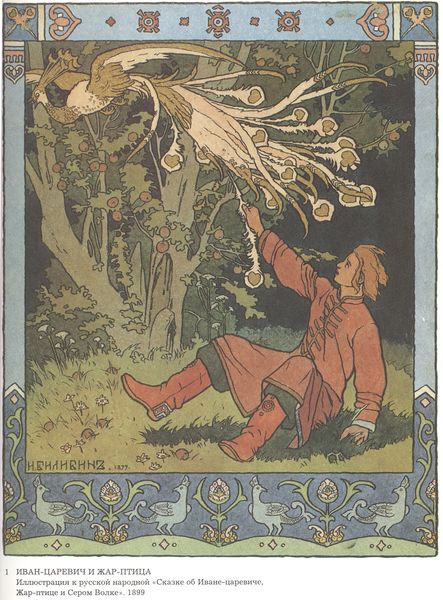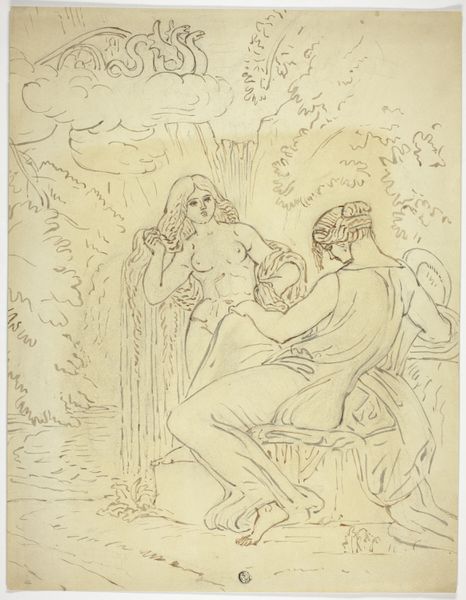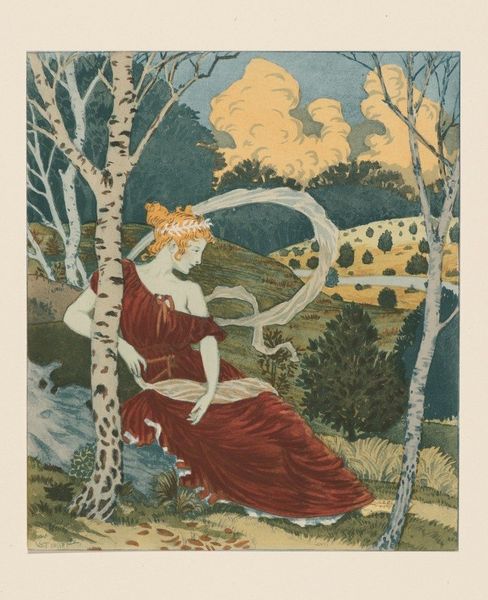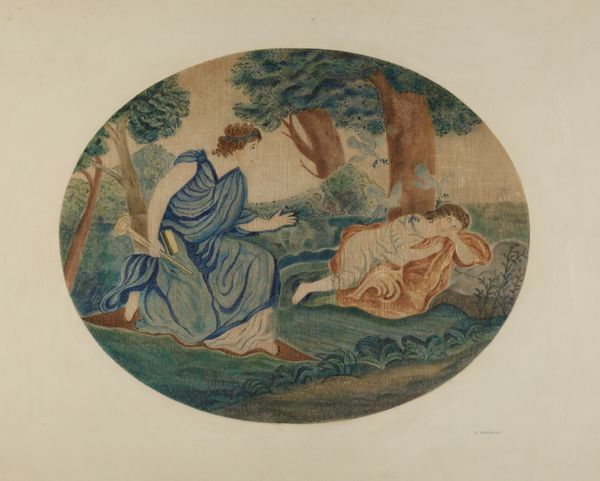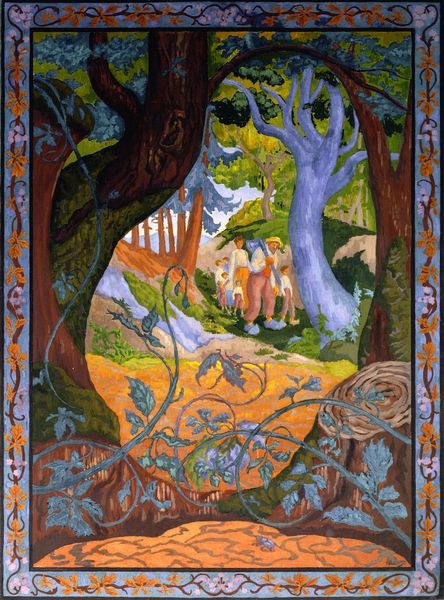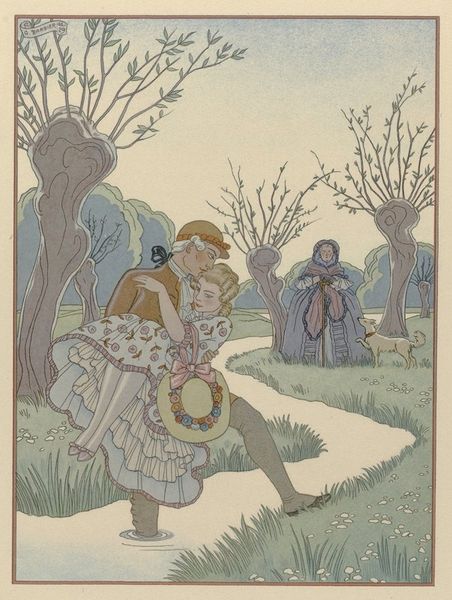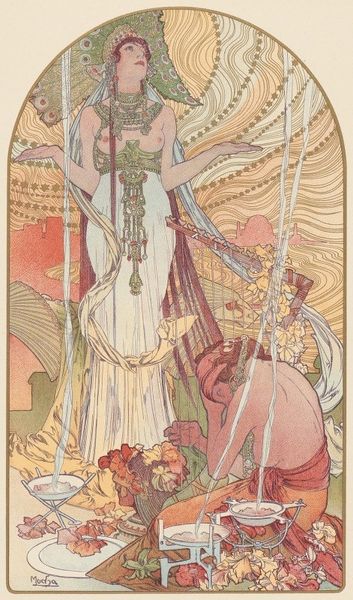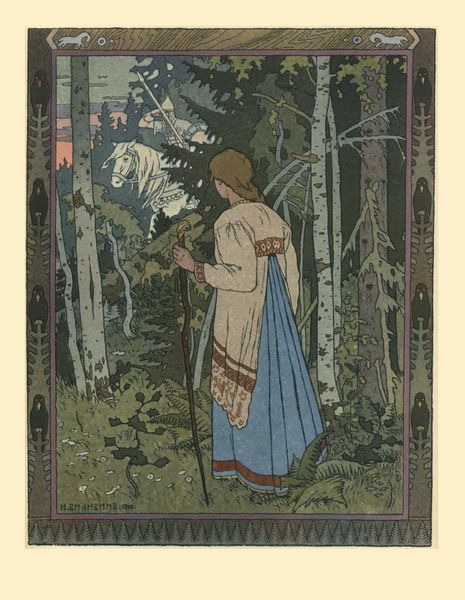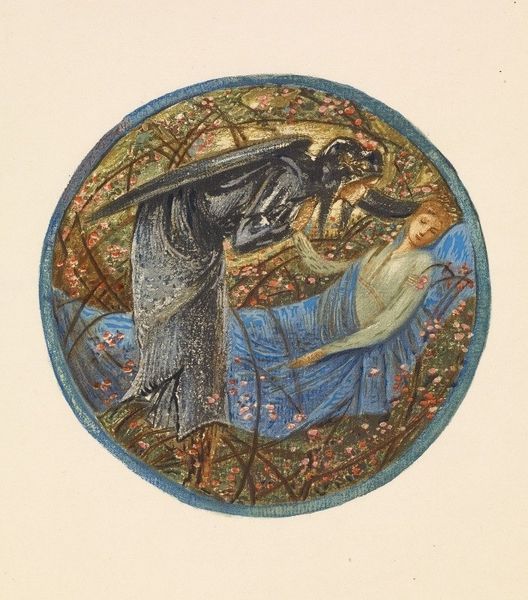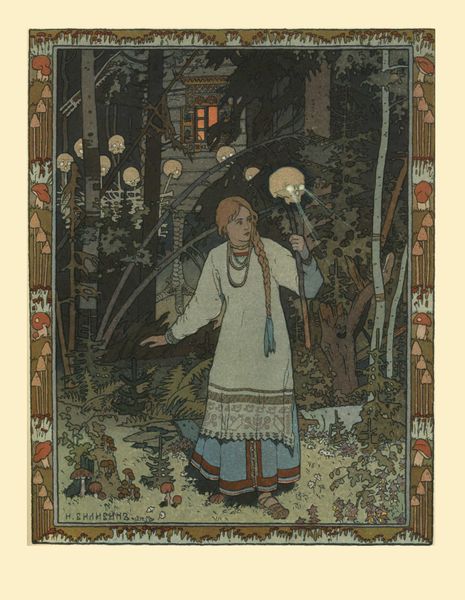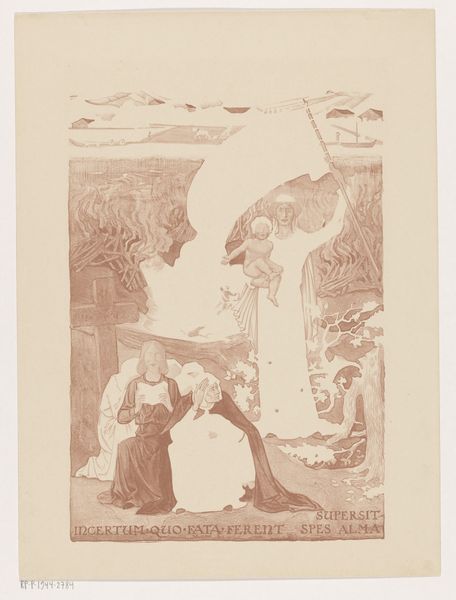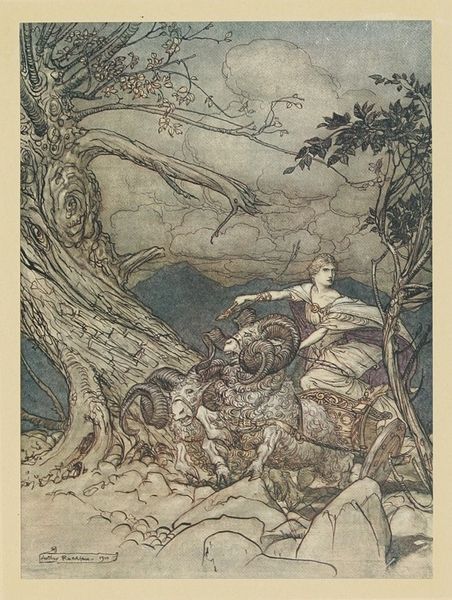
Dimensions: sheet: 25 × 48.9 cm (9 13/16 × 19 1/4 in.)
Copyright: National Gallery of Art: CC0 1.0
Editor: This is "Study for a Lunette" by Charles Sprague Pearce, likely created between 1890 and 1897. It seems to be a painting with watercolor and drawing elements. I’m struck by the sort of staged, theatrical quality of it, like figures performing a play within a landscape. What's your interpretation of this work? Curator: It's interesting you say "theatrical," because the lunette shape itself suggests architectural decoration, maybe even a public commission. Knowing Pearce worked on murals for the Library of Congress, we can see this study reflecting that ambition for public art. How does the subject matter, these classical figures in an American landscape, contribute to a public narrative? Editor: It's like he’s trying to graft classical themes onto an American identity. Is he succeeding? The figures feel a little…displaced. Curator: Exactly! That tension is key. Artists of this period, especially those trained abroad like Pearce, grappled with defining an "American" art. They often looked to classical history for legitimacy, but the transplantation wasn’t always seamless. Consider the symbolism - what does the lyre suggest in this context? Is it about elevating American culture, or pointing to a lack of homegrown artistic tradition? Editor: I guess the lyre could represent aspiration…or maybe a kind of yearning for a deeper cultural history that America just doesn’t have. Also, the owl watching adds to the feeling of historical weight somehow. Curator: Precisely! The owl, often a symbol of wisdom and knowledge, could represent the artistic or intellectual elite observing and judging the evolving American cultural landscape. Understanding those societal power dynamics really shapes how we view this “study.” Editor: This has shifted how I see this piece completely. Before, it seemed just decorative, but I now recognize how engaged it is with broader cultural questions. Curator: And that's the power of understanding the historical context - it opens up layers of meaning we might otherwise miss.
Comments
No comments
Be the first to comment and join the conversation on the ultimate creative platform.
